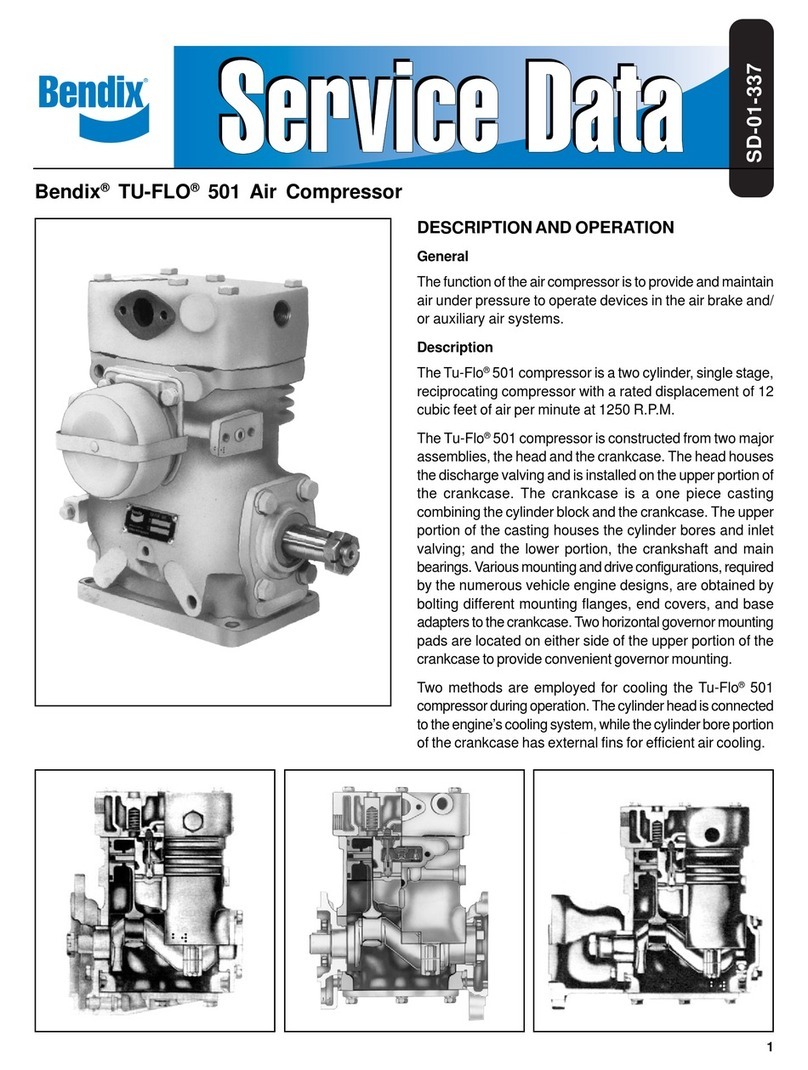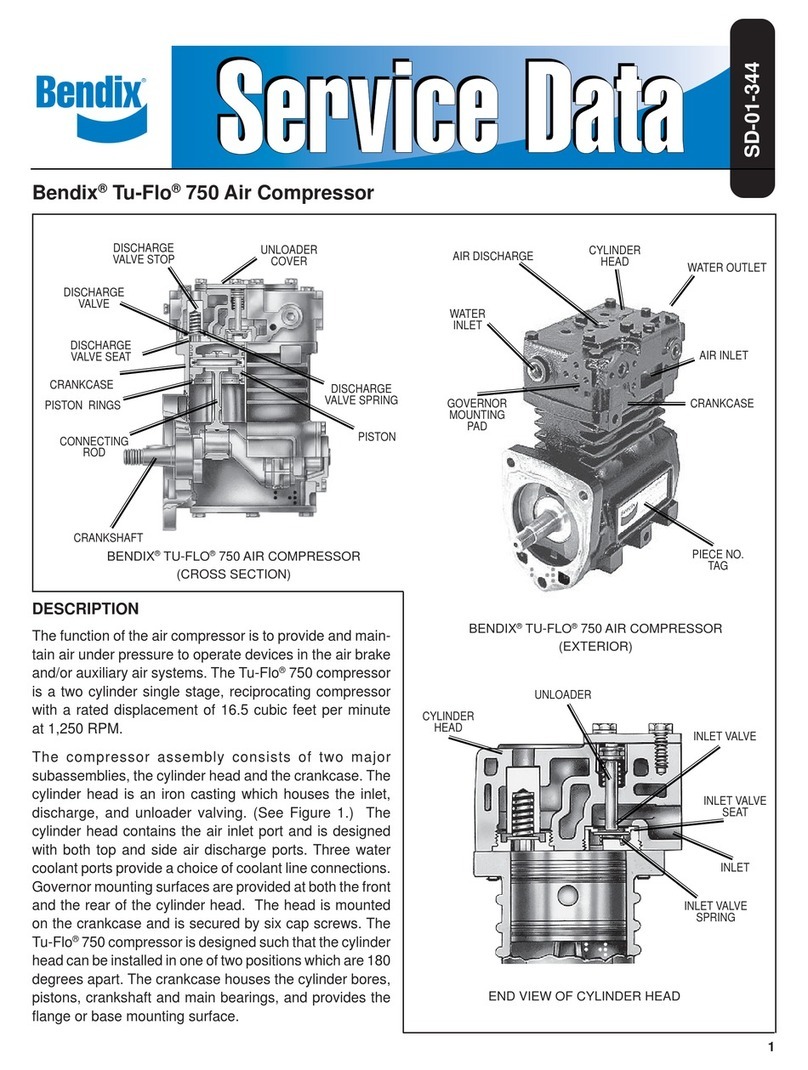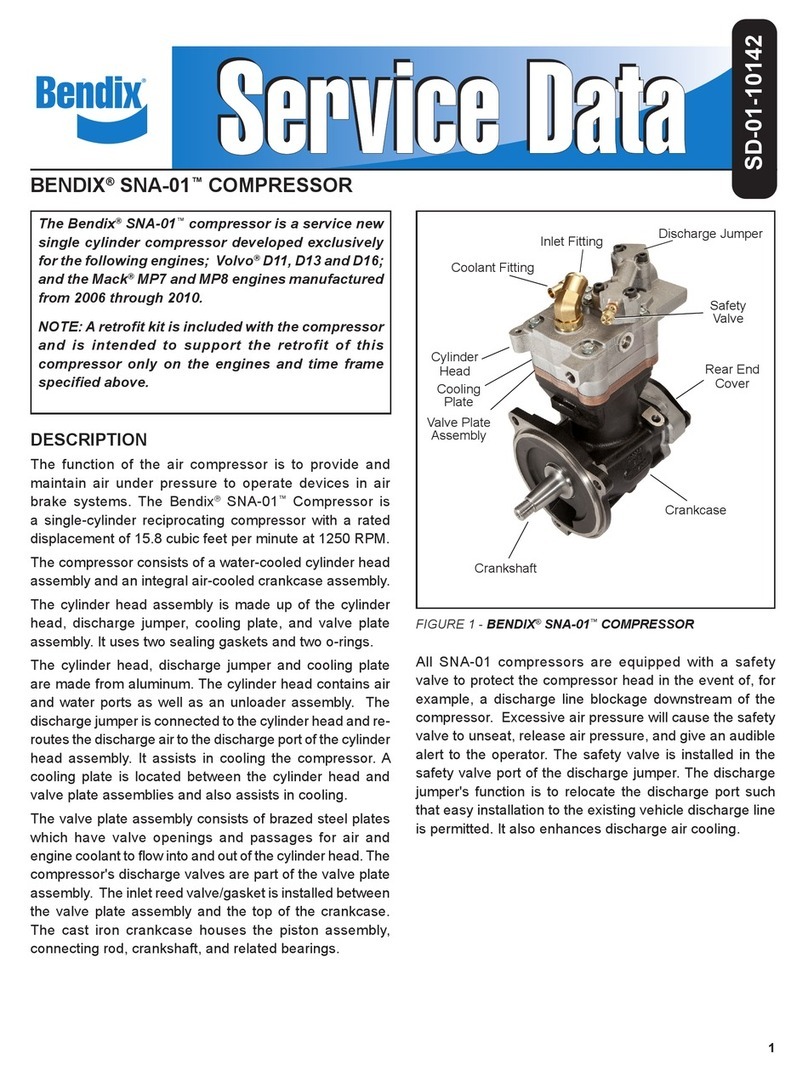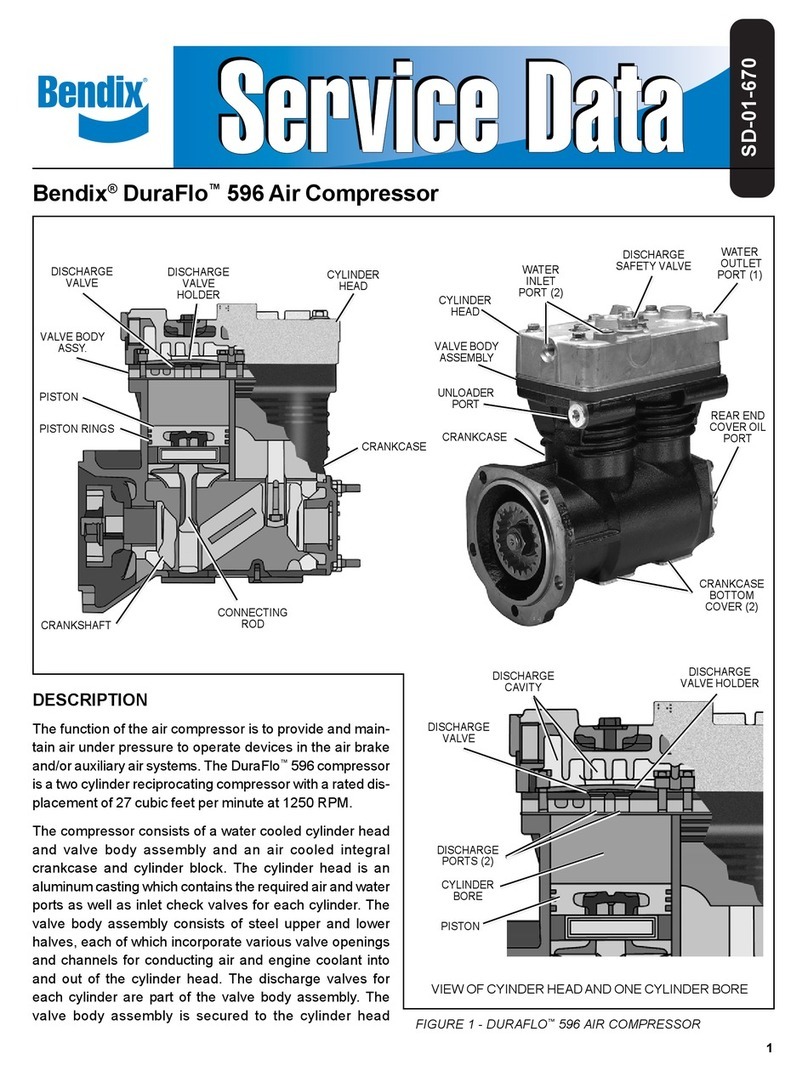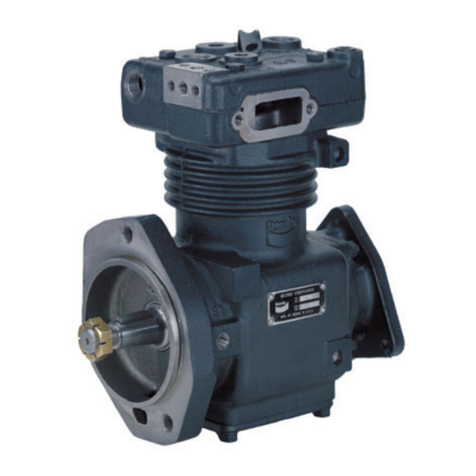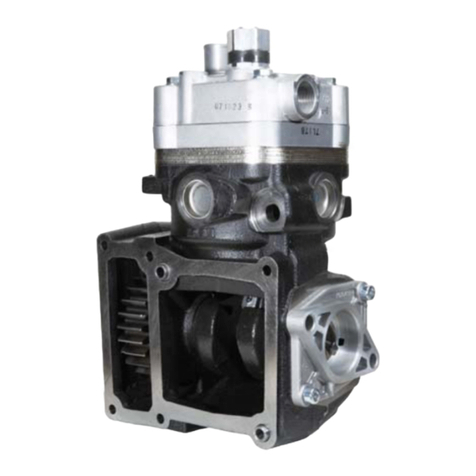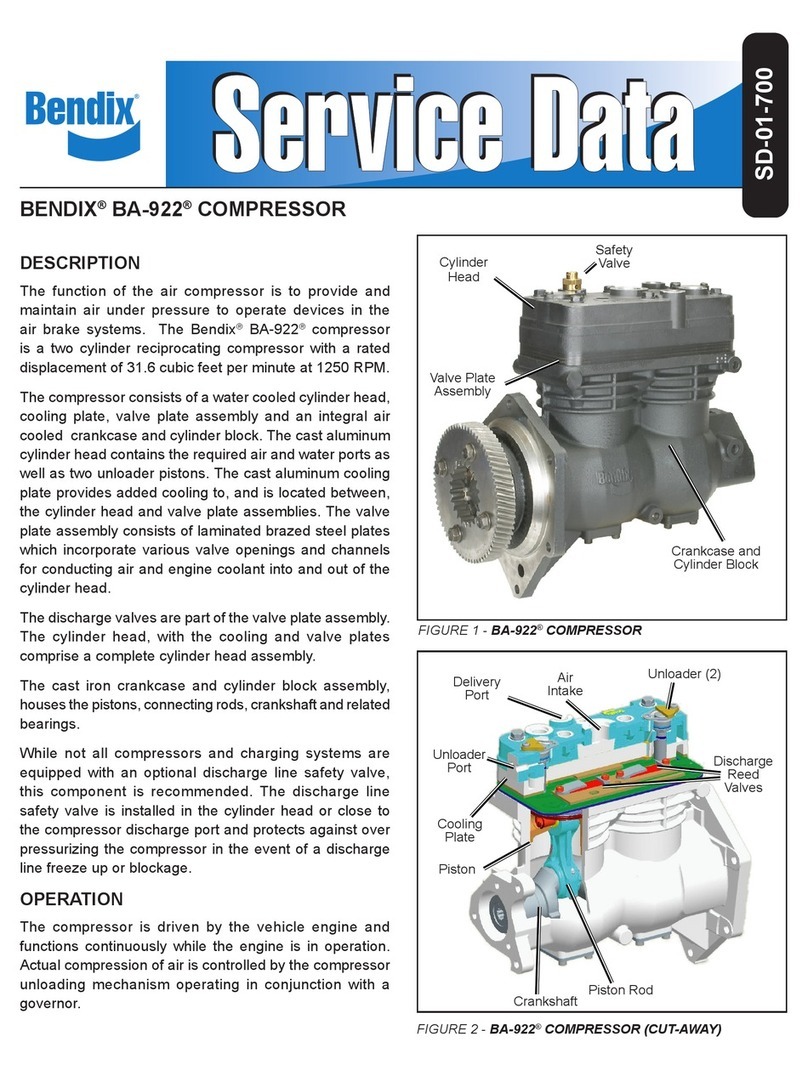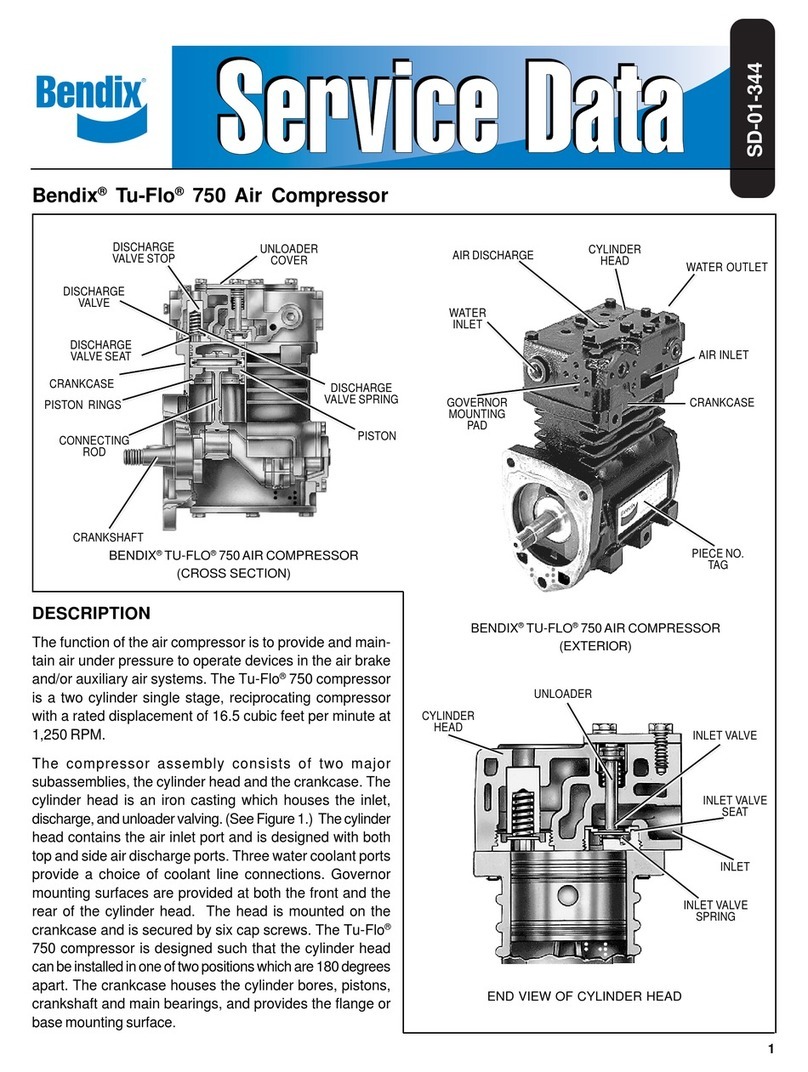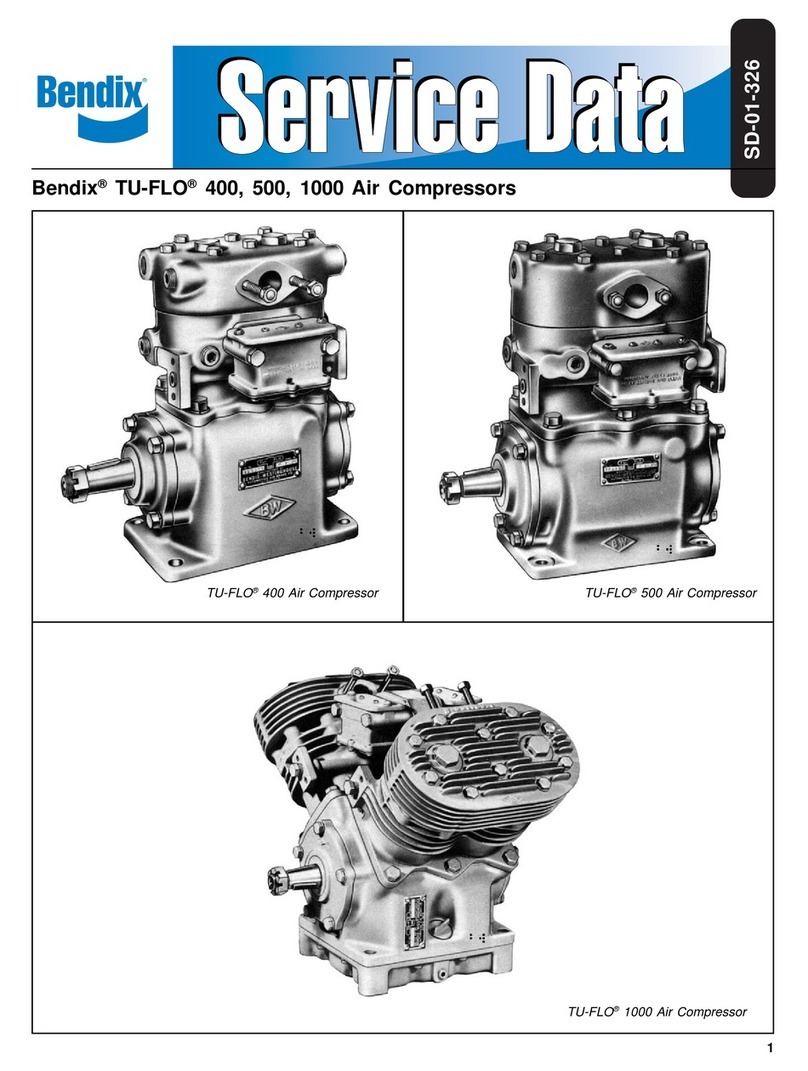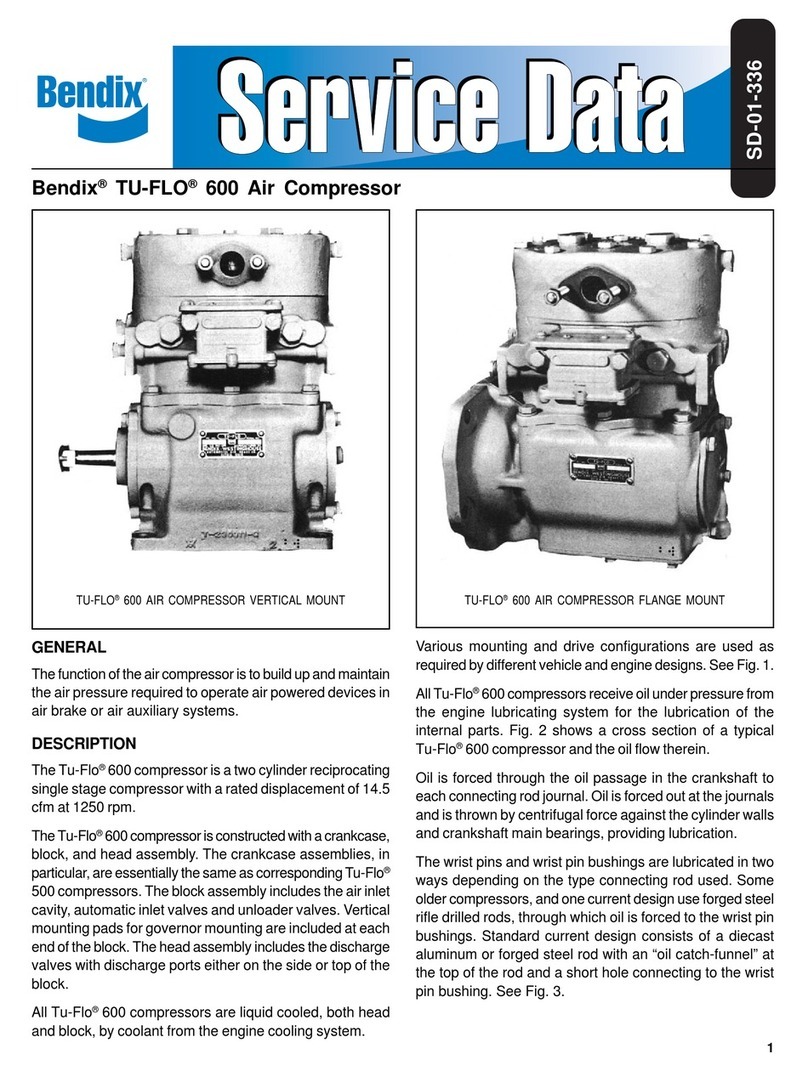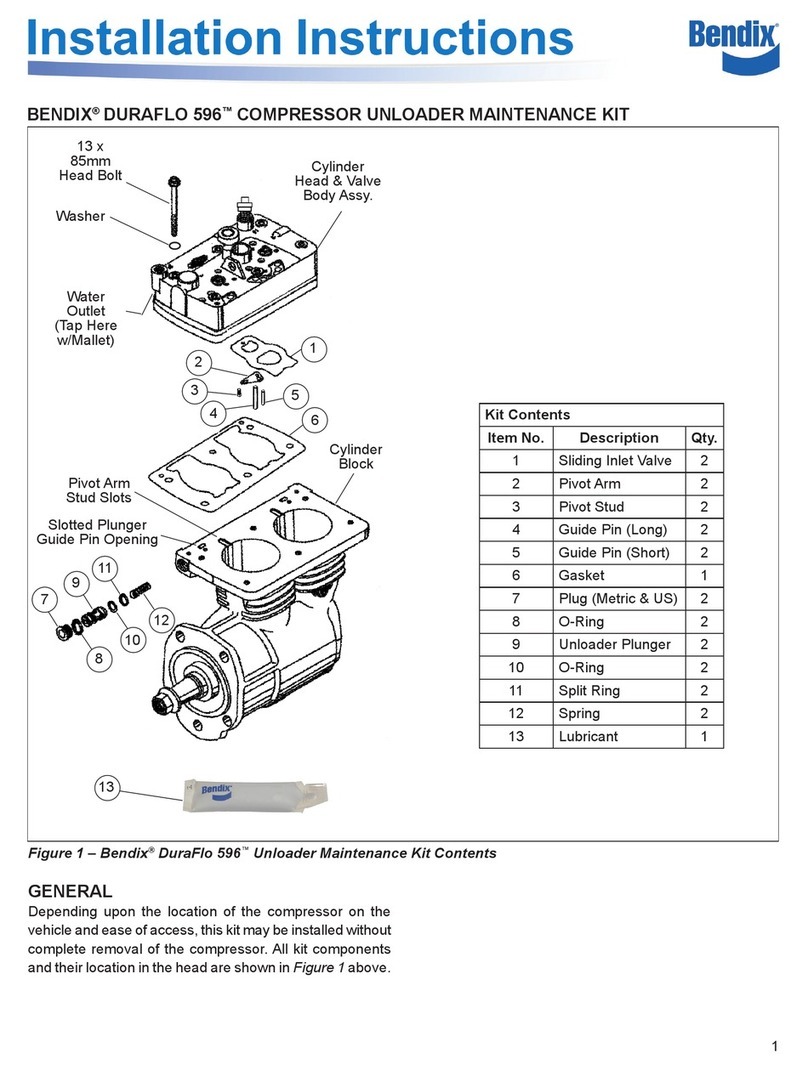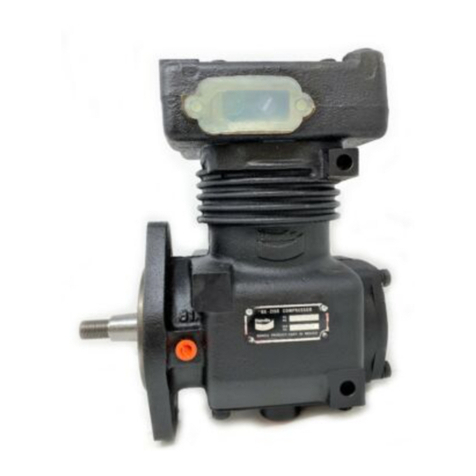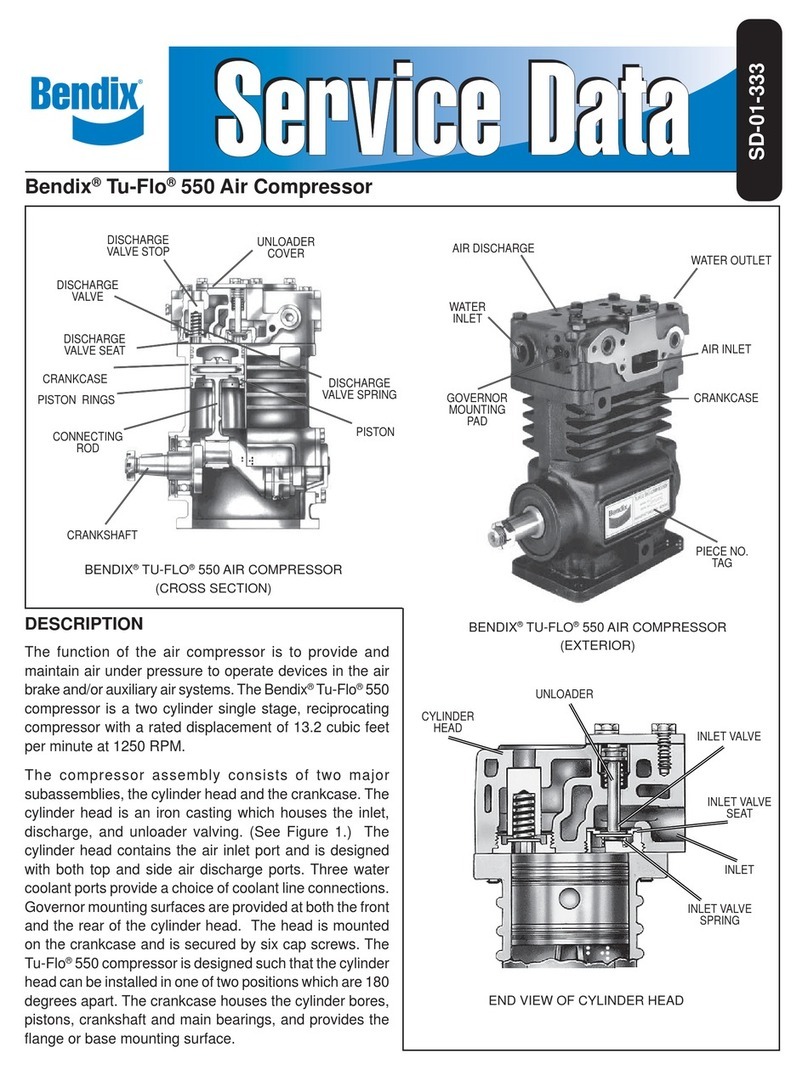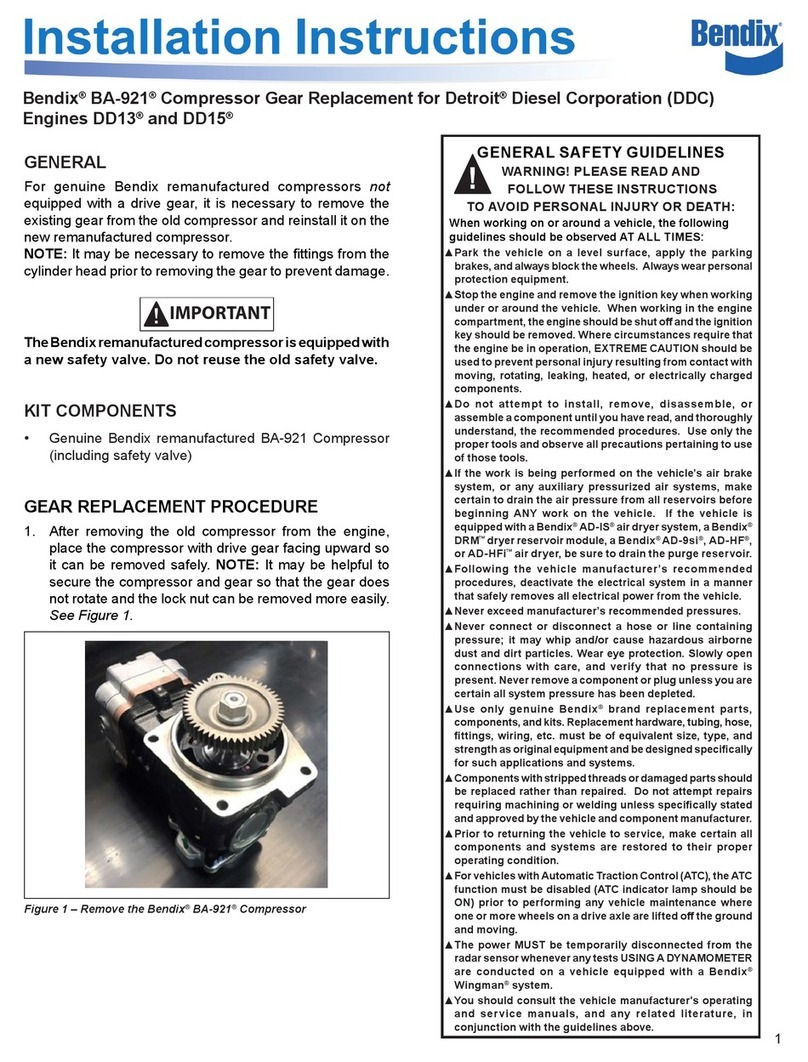
6
Every 6 months, 1800 operating hours or after each
50,000 miles:
Remove the discharge head fittings and inspect the
compressordischargeportanddischargelineforexcessive
carbondeposits.Ifexcessivebuildup is noted in either,the
discharge line must be cleaned or replaced and the
compressor checked more thoroughly, paying special
attention to the air induction system, oil supply and return
system, and proper cooling. If necessary, repair or replace
thecompressor.Checkforproper belt andpulleyalignment
andbelt tension.Adjustifnecessary,payingspecialattention
not to over tighten the belt tension. Check for noisy
compressor operation, which could indicate a worn drive
gear coupling or a loose pulley. Adjust and/or replace as
necessary. Check all compressor mounting bolts and
retightenevenlyif necessary.Checkfor leakageandproper
unloadermechanismoperation.Replace if defectiveinany
way.
Every 24 months, 7200 operating hours or after each
200,000 miles:
Perform a thorough inspection as indicated below and
dependinguponthe resultsofthis inspectionorexperience,
disassemble the compressor, clean and inspect all parts
thoroughly,repairorreplace allwornordamagedpartsusing
only genuine Bendix replacements or replace the
compressorwithagenuine Bendix remanufacturedunit.
Important:Shoulditbenecessarytodraintheenginecooling
systemtopreventdamage from freezing,thecylinderhead
of the compressor must also be drained.
GENERAL SERVICE CHECKS
INSPECTION
Itisoftheutmost importance that the compressorreceives
a clean supply of air. The air strainer must be properly
installedandkeptclean.Ifthecompressorintakeisconnected
to the engine air cleaner, supercharger, etc., these
connections must be properly installed and maintained.
Checkthecompressormountingstobesuretheyaresecure.
Checkthedriveforproperalignment, belt tension, etc.
Inspect the oil supply and return lines. Be sure these lines
areproperlyinstalled and thatthecompressor is gettingthe
proper supply of oil, and just as important, that the oil is
returningtotheengine. Checkthecoolantlinesto and from
the compressor and see that the cooling fins on the
crankcasearenotcloggedwith dirt, grease, etc.Checkthe
unloadermechanismfor properandpromptoperation.
OPERATING TESTS
Vehicles manufactured after the effective date of FMVSS
121,with theminimum requiredreservoirvolume,musthave
a compressor capable of raising air system pressure from
85-100 P.S.I. in 25 seconds or less. This test is performed
withthe engineoperatingatmaximumgovernedspeed.The
vehiclemanufacturermustcertify this performance onnew
vehicles with appropriate allowances for air systems with
greaterthanthe minimumrequiredreservoir volume.
AIR LEAKAGE TESTS
Leakage past the discharge valves can be detected by
removingthedischarge line,applyingshop airbackthrough
the discharge port and listening for escaping air. Also, the
dischargevalvesandthe unloader pistons canbechecked
forleakagebybuildinguptheairsystem until the governor
cutsout,thenstoppingthe engine.Withtheenginestopped,
listenforescapingair at the compressorintake.To pinpoint
leakage if noted, apply a small quantity of oil around the
unloader pistons. If there is no noticeable leakage at the
unloader pistons, the discharge valves may be leaking. If
the compressor does not function as described above, or
leakageisexcessive,itis recommended that itbereturned
to the nearest authorized Bendix Distributor for a factory
remanufactured compressor. If this is not possible, the
compressor can be repaired using genuine Bendix
replacementparts,inwhich case, the followinginformation
shouldprove helpful.
REMOVING AND DISASSEMBLY
REMOVING
These instructions are general and are intended to be a
guide,insomecasesadditionalpreparationsandprecautions
are necessary. Chock the wheels of the vehicle and drain
theairpressurefromallthe reservoirs in the system. Drain
the engine cooling system and the cylinder head of the
compressor. Disconnect all air, water and oil lines leading
to and from the compressor. Remove the drive gear(s) or
pulley from the compressor crankshaft using a gear puller.
Inspect the pulley or gear and associated parts for visible
wearordamage. Sincetheseparts areprecisionfitted,they
mustbereplacediftheyareworn or damaged.
DISASSEMBLY
GENERAL
Remove road dirt and grease from the exterior of the
compressorwitha cleaningsolvent.Before thecompressor
is disassembled, the following items should be marked to
showtheirrelationship whenthecompressoris assembled.
Mark both the front and rear end cover in relation to the
crankcase. Mark the drive end of the crankshaft in relation
tothefrontendcover and the crankcase.Markthecylinder
head in relation to the block and the block in relation to the
crankcase. Mark the base plate or base adapter in relation
to the crankcase.
